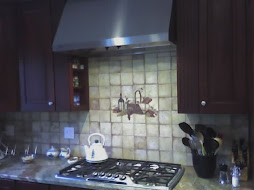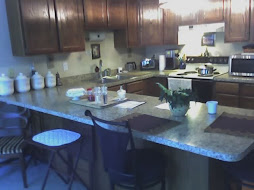"Proper prior planning prevents piss-poor performance" --common business adage
 |
| View from the doorway--a tricky bath tile layout! |
The beauty of tile is that it's not a fragile sheet good, or a warpy wood product. You can 'play with it' like Lego, shuffling the pieces around until you have them just right. No cardboard templates are required, and you don't have to sort out the bad pieces (usually, anyway). Each tile will generally vary by no more than 1/32" - close enough to make tiles interchangeable.
Where should you start?
You don't want to get halfway through the job and find yourself two tiles short.Make rough measurements first, on graph paper if you like, and be sure you have enough tile purchased to complete the job. Always allow no less than 10% for potential cuts and waste. You don't want to get halfway through the job and find yourself two tiles short. For one thing, you'll have a difficult time matching the tile lot for small quantities. Mixed-lot tiles can sometimes stand out as if they were a different color, so don't risk it.
Begin with an empty room, free of clutter and vacuumed clean. Typically, remove all existing baseboards. Same for adjacent hallways, if your tile will continue there, too. Have your backer board (or similar tile underlayment) ready and handy, but uninstalled. You'll want to be sure that backer joints and tile joints don't coincide. The only way to know this is by laying out your tile in advance. Decide your grout joint size based on personal preference, and have spacers available. These are cheap, and go a long way toward producing professional results... keep reading
Reprinted from the original on Helium.com copyright 2010 - Jim Bessey
. Read Jim's profile at Helium
_______________________________________________
See this story as it appears on Helium.com
For more How-To Guides, see our new How To page, hosted here.
+edit.jpg)










.jpg)

No comments:
Post a Comment